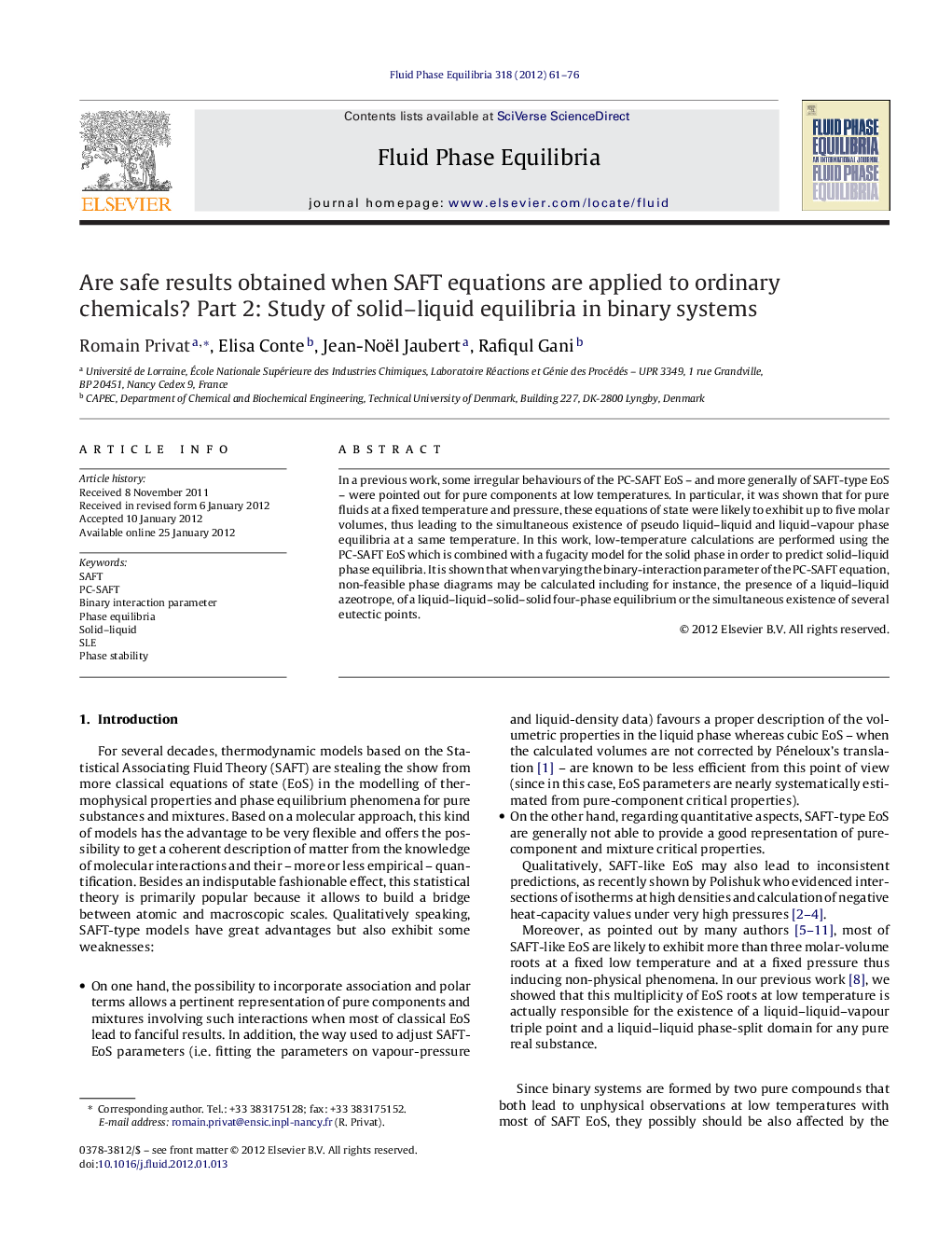| کد مقاله | کد نشریه | سال انتشار | مقاله انگلیسی | نسخه تمام متن |
|---|---|---|---|---|
| 204317 | 460717 | 2012 | 16 صفحه PDF | دانلود رایگان |

In a previous work, some irregular behaviours of the PC-SAFT EoS – and more generally of SAFT-type EoS – were pointed out for pure components at low temperatures. In particular, it was shown that for pure fluids at a fixed temperature and pressure, these equations of state were likely to exhibit up to five molar volumes, thus leading to the simultaneous existence of pseudo liquid–liquid and liquid–vapour phase equilibria at a same temperature. In this work, low-temperature calculations are performed using the PC-SAFT EoS which is combined with a fugacity model for the solid phase in order to predict solid–liquid phase equilibria. It is shown that when varying the binary-interaction parameter of the PC-SAFT equation, non-feasible phase diagrams may be calculated including for instance, the presence of a liquid–liquid azeotrope, of a liquid–liquid–solid–solid four-phase equilibrium or the simultaneous existence of several eutectic points.
► Due to the high-polynomial orders by volume of SAFT EoS, more than three volume (or density) roots can be found when solving these EoS at an overall composition, temperature and pressure.
► Consequently, SAFT models may predict unrealistic phase behaviours at low or very low temperatures, even with multicomponent systems.
► Applying SAFT EoS to solid–liquid equilibrium (SLE) calculations, it is possible to point out the existence of multiple stable eutectic points in the same phase diagram as well as liquid–liquid azeotropy.
► These unrealistic phenomena may arise or not according to the value given to the kij parameter (binary interaction parameter of SAFT EoS).
► This paper does not question the fact that SAFT models can predict SLE with a high accuracy. It is simply aimed at informing SAFT users about the potential existence of non-physical phenomena at low (or very low) temperatures.
Journal: Fluid Phase Equilibria - Volume 318, 25 March 2012, Pages 61–76